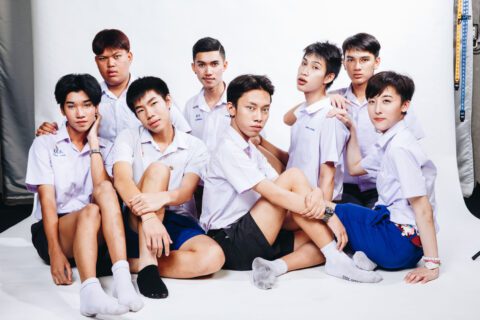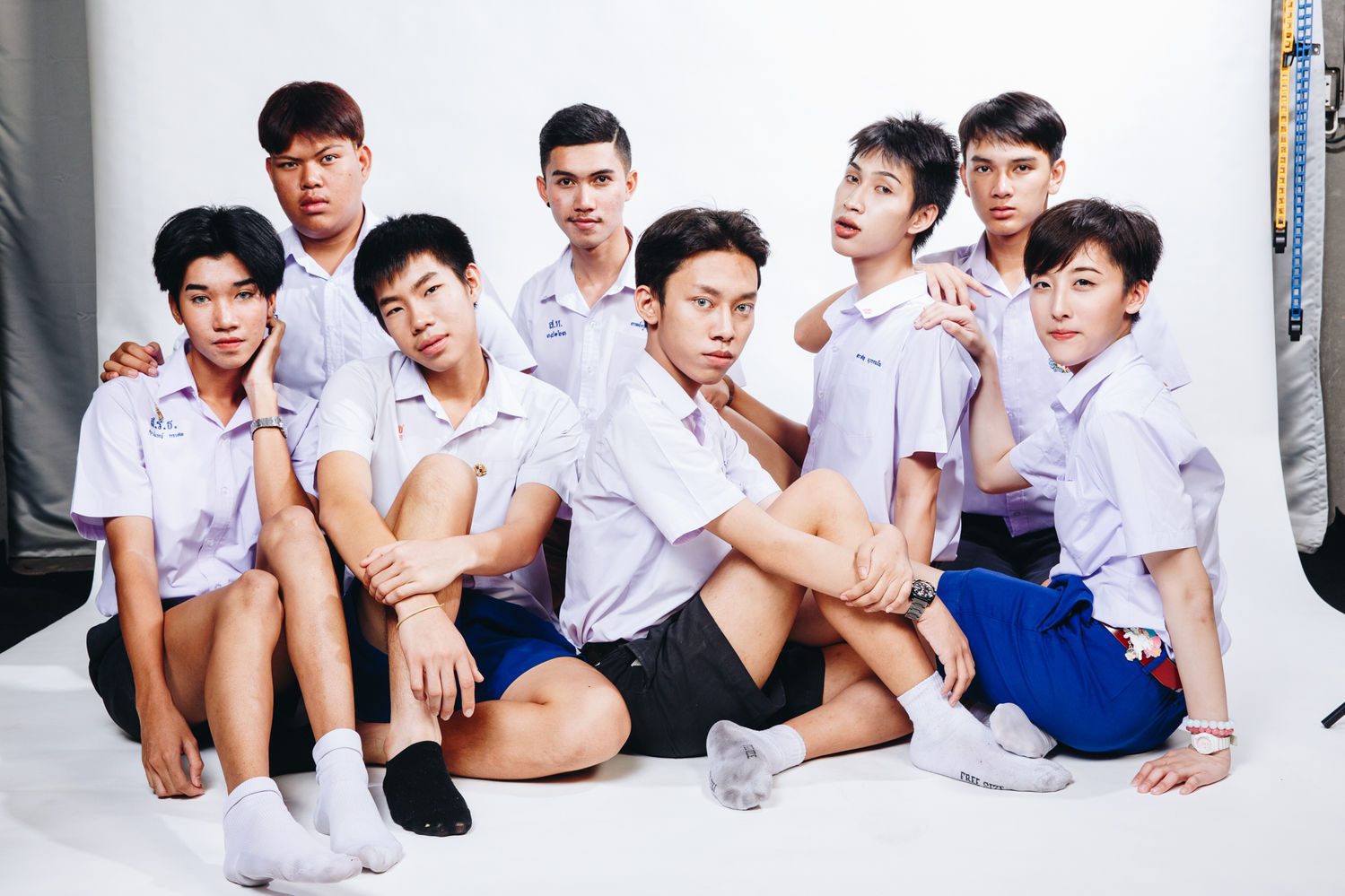
One of the most asked questions is “what do you want to be when you grow up?”. But nobody ever asks the youth, “what do you want to be now?” From kindergarten to university, Thai students wear school uniforms for 22 years. For young Thais who were born male but do not identify as male or live up to the norms of masculinity, they are forced to embrace the male uniform by wearing a white shirt with shorts and a military hairstyle. Their only option is to wear a school uniform that they cannot choose. Thai student uniform represents unity, hegemony, hierarchy, class distinction, and patronage. Some uniforms have a name and student ID number on its shirt, but do they represent the identity of students who wear them at all? “7465” represents the hidden identity of youths that cannot be freely expressed. Under the uniform, they tried to be themselves as much as possible. “7465” is not just a student number sewed on their uniform, but also a fight for their own identification.
Van kleuterschool tot universiteit dragen alle Thaise scholieren en studenten een uniform. Het zorgt voor onderlinge eenheid, maar ook voor hegemonie en klassenonderscheid. Voor jongens is het een mannelijk uniform, bestaande uit een korte broek, een militair kapsel en een shirt met naam en student ID nummer. Iedereen is hetzelfde.
“Wat wil je later worden?” Het is misschien wel een van de meest gestelde vragen aan kinderen. Zelden vraagt iemand “Wat wil je nu zijn?”
Van kleuterschool tot universiteit dragen alle Thaise scholieren en studenten een uniform. Het zorgt voor onderlinge eenheid, maar ook voor hegemonie en klassenonderscheid. Voor jongens is het een mannelijk uniform, bestaande uit een korte broek, een militair kapsel en een shirt met naam en student ID nummer. Iedereen is hetzelfde. Dat is lastig als je als man geboren bent, maar je niet als man identificeert en niet voldoet aan de normen van mannelijkheid. “7465” is niet alleen een studentennummer dat op een uniform is genaaid, maar vertegenwoordigt ook een verborgen gevecht voor eigen identiteit die nauwelijks kan worden uitgedrukt.
Over de fotograaf
Watsamon Tri-yasakda, ook bekend als “June” (zij/haar) is een Thaise queer fotograaf en visuele verhalenverteller. Ze is al meer dan zes jaar actief bezig met het documenteren van kwesties rond mensenrechten voor de LGBTQ-gemeenschap in Thailand en Zuidoost-Azië.
In 2019 werd June opgenomen in Time Out’s”Bangkok-based LGBTQ figures you should know right now”. Hierin staat ze samen met prominente LGBTQ personen die met hun werk de acceptatie van seksuele en genderdiversiteit in de Thaise samenleving helpen verbeteren.
Ze is lid van “Women Photograph”. Haar werk is gepubliceerd in lokale en internationale media, zoals Financial Times, DER SPIEGEL en Washington Post. Voordien werkte ze meer dan drie jaar als fulltime fotograaf voor THE STANDARD. Haar fotowerken over de LHBTQIA-gemeenschap zijn tentoongesteld in meer dan 15 steden over de hele wereld.

Hundreds have joined the first Yangon Pride for the LGBTQ community in Myanmar on Jan. 27, 2019. Section 377 reinforces bias and prejudice against the local LGBTQ community with a number of transgender and gay men having been arrested. As a Thai queer photographer, it was a happy moment to see the Queer ASEAN community be happy and comfortable in their own home city.

The love story of two young Cambodian women, Soy Meta and Mai Sophak began with Facebook Live. They met each other and then moved to Siem Reap to start a life together as a couple. They own a beauty salon where they also live with Sophak’s younger siblings who they look after. However, their relationship is not legally recognized in Cambodia. —- My artist statement on Today We Live Despite growing up in Asia, it has been rare to see the everyday life of local LGBTQ portrayed in any media. It was even more difficult to see the portrayal of LGBTQ living in the province, outside of modernized urban setting society. I was honored to get an opportunity to tell the story of two young Cambodian women who are in love in a society that their relationship is not legally recognized.
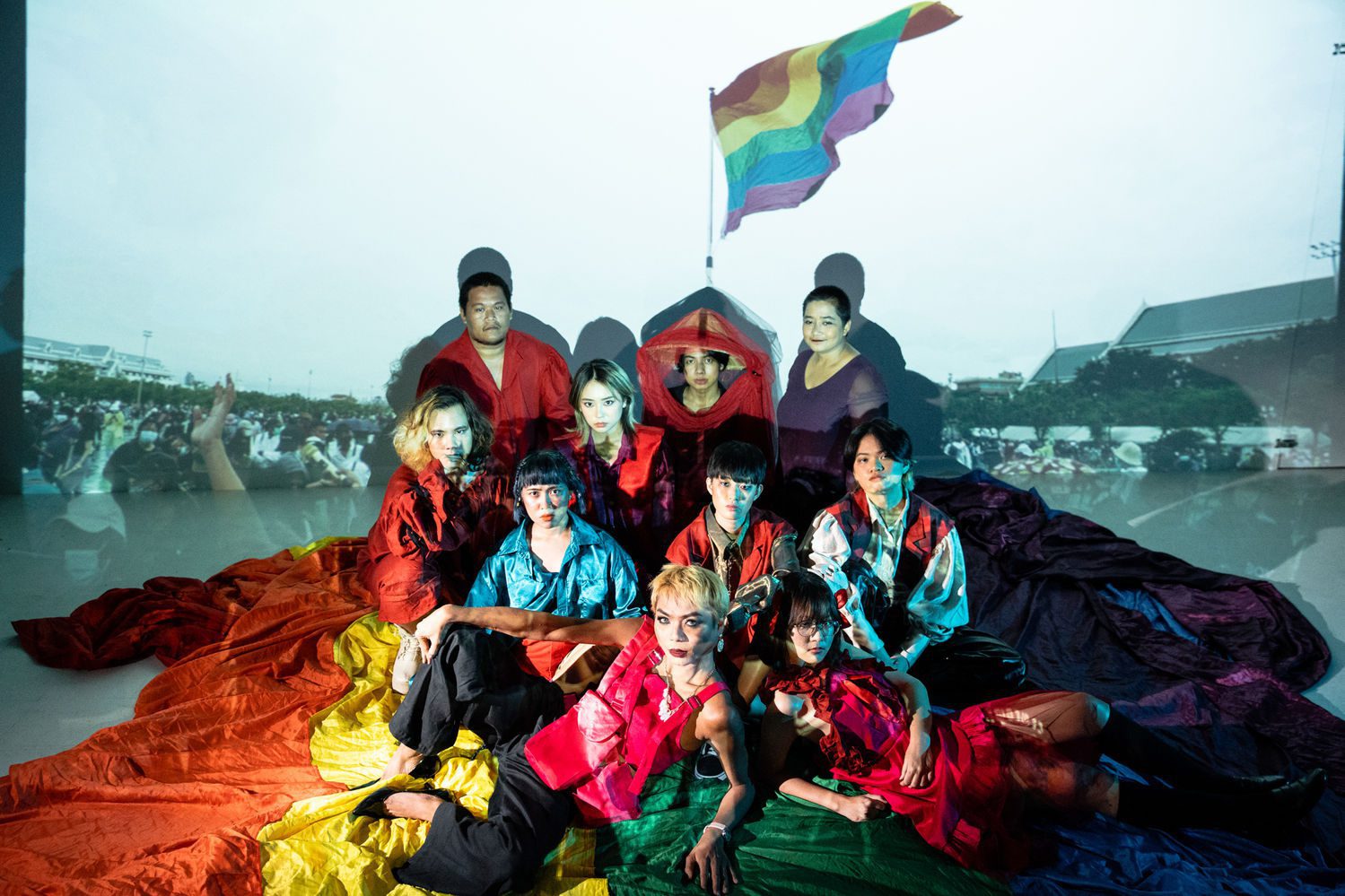
“If Today Were Bangkok Pride, …” is my conceptual work in response to “United Love: Documenting Pride in Asia”. Thailand is viewed as ‘the paradise’ for the LGBTQ community, but in reality, there is neither equal marriage nor Bangkok Pride. Since the first time I have attended Pride in other cities, I have always wondered what Pride in Bangkok, my own hometown, would be like — all the love, smiles, and tears shared during the event. I have been dreaming of seeing the Pride flag on Bangkok street. Then, I have seen Pride flags on streets in Thailand in other cities’ Pride like Chiang Mai and Pattaya, and also during the pro-democracy protests in Bangkok in 2020. As Pride Month was approaching, I decided to transform my own imaginary Pride of Bangkok into reality. I have invited people from different groups who have contributed to the LGBTQ community in many aspects —social movement, human rights, politics, and entertainment to express themselves as if today were Bangkok Pride.
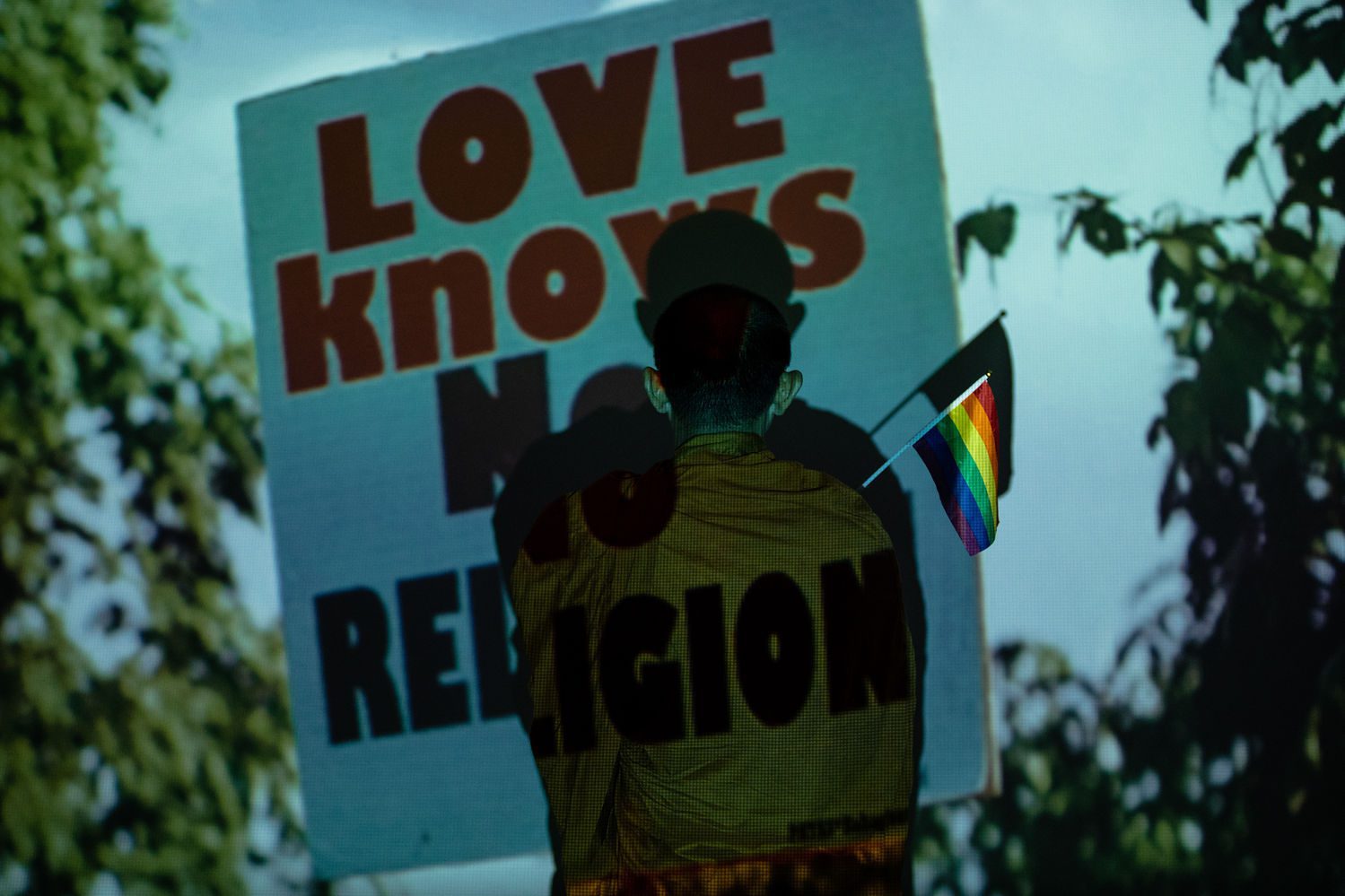
“If Today Were Bangkok Pride, …” is my conceptual work in response to “United Love: Documenting Pride in Asia”. Thailand is viewed as ‘the paradise’ for the LGBTQ community, but in reality, there is neither equal marriage nor Bangkok Pride. Since the first time I have attended Pride in other cities, I have always wondered what Pride in Bangkok, my own hometown, would be like — all the love, smiles, and tears shared during the event. I have been dreaming of seeing the Pride flag on Bangkok street. Then, I have seen Pride flags on streets in Thailand in other cities’ Pride like Chiang Mai and Pattaya, and also during the pro-democracy protests in Bangkok in 2020. As Pride Month was approaching, I decided to transform my own imaginary Pride of Bangkok into reality. I have invited people from different groups who have contributed to the LGBTQ community in many aspects —social movement, human rights, politics, and entertainment to express themselves as if today were Bangkok Pride.
“What do you want to be when you grow up? It is perhaps one of the most frequently asked questions of children. Rarely does anyone ask “What do you want to be now?”
From kindergarten to university, all Thai pupils and students have to wear a uniform. It ensures unity among them, but also hegemony and class distinction. For boys, it is a male uniform, consisting of shorts, a military haircut and a shirt with a name and student ID number. Everyone is the same. That’s tricky if you were born a man but don’t identify as one and don’t meet the standards of masculinity. “7465” is not only a student number sewn onto a uniform, but also represents a hidden struggle for identity that can hardly be expressed.
About the photographer
Watsamon Tri-yasakda, also known as “June” (she/her) is a Thai queer photographer and visual storyteller. She has been actively documenting human rights issues for the LGBTQIA+ community in Thailand and Southeast Asia for over six years.
In 2019, June was listed in Time Out’s “Bangkok-based LGBTQ figures you should know right now”. It features her alongside prominent LGBTQIA+ individuals whose work is helping to improve the acceptance of sexual and gender diversity in Thai society.
She is a member of “Women Photograph”. Her work has been published and featured in local and international media, such as The Financial Times, Der Spiegel, and The Washington Post. She previously worked as a full-time photographer for The Standard for over three years. Her photographic works about the LGBTQIA+ community have been exhibited in more than 15 cities around the world.
